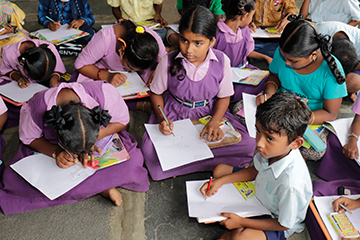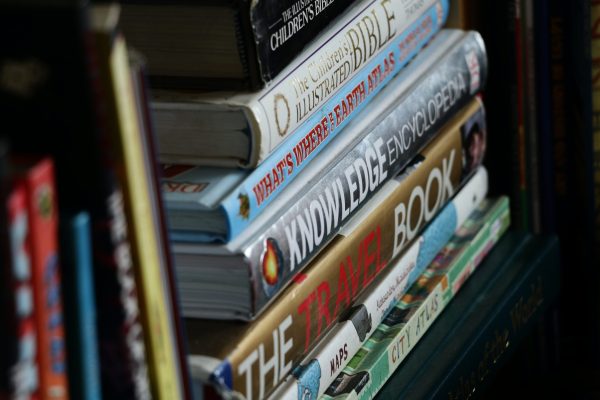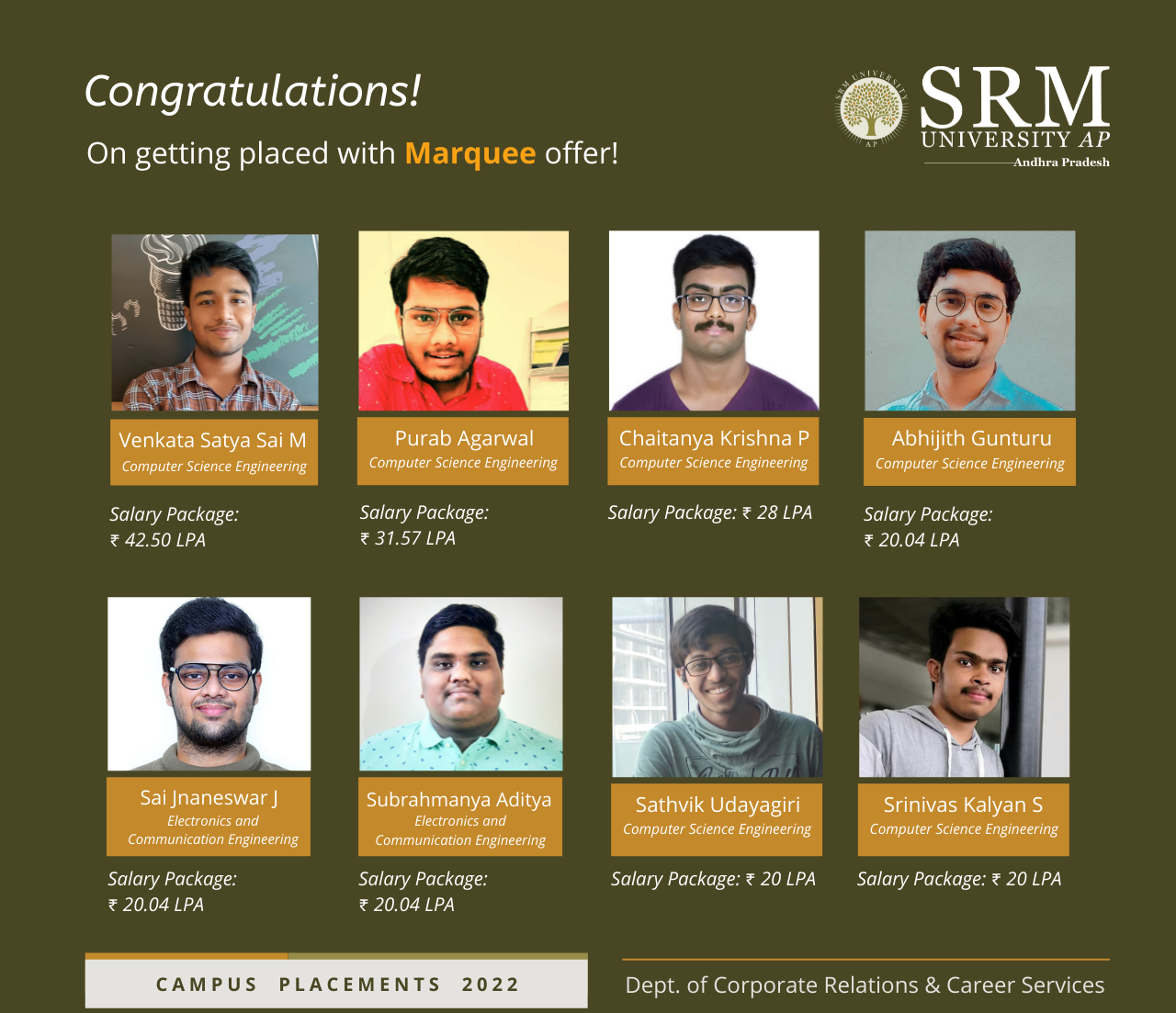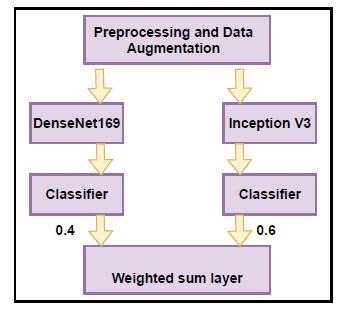Team Sunshine celebrate Children’s day in magnificence
 Children’s Day celebrations were held at Nirukonda and Nauluru government schools from Friday to Monday under the auspices of the Student Affairs department at SRM University-AP. The programme named SRM Sunshine, organised various games and competitions for students from classes one to ten and distributed prizes to winners. The essay writing, drawing, running, skipping and musical chair competitions focused on children and their enjoyment contributing to their cognitive development.
Children’s Day celebrations were held at Nirukonda and Nauluru government schools from Friday to Monday under the auspices of the Student Affairs department at SRM University-AP. The programme named SRM Sunshine, organised various games and competitions for students from classes one to ten and distributed prizes to winners. The essay writing, drawing, running, skipping and musical chair competitions focused on children and their enjoyment contributing to their cognitive development.
Students of SRM University-AP mingled with the children involving them in various games. The tiny tots of Preschool and Pre-primary celebrated the day with much joy and enthusiasm. The celebrations began on Friday, followed by a variety of fun-filled activities and games planned by the Sunshine team. Children were given chocolates and gifts like crayons, pencils etc. as a token of appreciation. The event was attended by Ms Revathi Balakrishnan, Assistant Director – Student Affairs; Dr Abdul Mohimin, Assistant Director – Physical Education and Mr Narendra Babu, Manager – Student Affairs.
Every year on November 14 India celebrates Children’s Day, the birth anniversary of Pandit Jawaharlal Nehru, India’s first Prime Minister. The day is also known as Bal Diwas. He adored children and once said that children are the country’s future and that they should be loved. Children also adored him and referred to him as ‘Chacha Nehru.’
- Published in Events, News, Students Affairs Events
BA History to MS Computer Science: The interdisciplinary journey abroad
 ‘Fostering curiosity and nurturing inquisitiveness’ These have been the goals of the Department of History at SRM University-AP to which Deva Harshalai Nimmagadda, Class of 2021 of Bachelor of Arts in History, belongs.
‘Fostering curiosity and nurturing inquisitiveness’ These have been the goals of the Department of History at SRM University-AP to which Deva Harshalai Nimmagadda, Class of 2021 of Bachelor of Arts in History, belongs.
The entire department and especially his beloved mentor, Dr Maanvender Singh, could not be more proud of him for securing a coveted position in the MS Program in Computer Science at Pace University, New York. Deva found a home for his desire to understand the past and progress towards future in SRM University-AP’s multidisciplinary courses which enabled him to learn more about cutting edge technology and innovative approach to history. This experience was instrumental in helping him achieve his place.
“During my course of studying BA History in SRM University-AP, I have realized that history will not equip you with the skills in only one field, but it also opens you up to diverse fields.” Deva said, “Thanks to the curriculum in SRM University-AP which enabled me to explore various fields like economics, Journalism, Data Science etc. Studying history will demand immense research work and it will refine your analytical skills and these are the skills you need to live in a Tech world. I would like to thank all my faculty for equipping me with such skills even during the pandemic. Today interestingly History major in my profile attracts various employers and projects as they believe in the analytical skill of a history major.”
Prof Singh, who is very fond of Deva Harshalai, spoke very highly about his student, “Deva always cultivated the best attributes a historian could possibly possess- the endless and untiring urge to quest for reason and answers, and the unique and insightful perspective to provide the most logical and comprehensive solution.” He added, “With these qualities in one’s possession one can achieve any ambition should they put their mind and efforts to it.”
“The right skill was cultivated in me, and the right attitude took root.” Deva said to inspire his juniors, “I am extremely grateful to have had the opportunity to call SRM University-AP my alma mater. I am who I am today because of it. I would advise all my juniors to commit to their education seriously and SRM University-AP will give you the experience and encouragement to obtain your dream career.” Deva would like to take advantage of this world capital and invest himself in research and development in the fields of Artificial Intelligence in future.
- Published in Departmental News, History Current Happenings, History News, News
Coveted Marquee offers up to ₹42.5 LPA chase our students
 Purab Agarwal, Chaitanya Krishna Pasula, Srinivas Kalyan, Udayagiri Sathvik, Myneni Venkata Satyasai, Gunturu Abhijith from the Department of Computer Science and Engineering, and Vellampalli Medha V Subramahnya Aditya and Sai Jnaneswar Juvvisetty from the Department of Electronics and Communication Engineering are excited about their placement with Marquee offers up to ₹42.5 LPA. These students from the most sought Engineering branches of SRM University-AP burned the midnight oil and have achieved the best!
Purab Agarwal, Chaitanya Krishna Pasula, Srinivas Kalyan, Udayagiri Sathvik, Myneni Venkata Satyasai, Gunturu Abhijith from the Department of Computer Science and Engineering, and Vellampalli Medha V Subramahnya Aditya and Sai Jnaneswar Juvvisetty from the Department of Electronics and Communication Engineering are excited about their placement with Marquee offers up to ₹42.5 LPA. These students from the most sought Engineering branches of SRM University-AP burned the midnight oil and have achieved the best!
Our placement team has thoroughly trained the students both in terms of technical expertise and soft skills, as the recruiters shortlist the best young talent who are passionate, devoted to learning, and bubbling with fresh and creative ideas. The talent and motivation of students, together with the intensive instruction they have received since the beginning of their BTech programme, have enabled them to excel in the recruitment drive. The CR&CS department feels that this is just the start of the placement season and that many more outstanding students are eager to demonstrate their abilities to obtain fantastic job offers from top-tier employers.
“I have gained a lot of knowledge from faculty members. All the questions asked in the interview were related to the curriculum of SRM AP”, says Udayagiri in enthusiasm. “The support extended by the placement department as training before the placement and during the placement was also very helpful to crack this interview. The sources or materials that were provided to me before the interview were very helpful to me to crack the interview”, he added.
Know more about our placement legacy at: https://srmap.edu.in/about/crcs/
- Published in CR&CS NEWS, CSE NEWS, ECE NEWS, News
Detection of diabetic retinopathy (DR) severity from fundus photographs
 A research paper titled “Detection of Diabetic Retinopathy (DR) severity from fundus photographs: An Ensemble Approach using weighted average”, has been published by Dr Mahesh Kumar Morampudi, Assistant Professor of Computer Science and Engineering, in the Arabian Journal for Science and Engineering.
A research paper titled “Detection of Diabetic Retinopathy (DR) severity from fundus photographs: An Ensemble Approach using weighted average”, has been published by Dr Mahesh Kumar Morampudi, Assistant Professor of Computer Science and Engineering, in the Arabian Journal for Science and Engineering.
Diabetic Retinopathy is a common diabetic disease that affects the retina and can result in blindness if not treated initially. Deep learning (DL) based models are proposed to detect the blood abnormalities in the retinal tissue due to diabetes mellitus obtained from fundus camera. The drawback of these models is the lack of performance. To address this, we propose to automate the process of detection of the severity of Diabetic Retinopathy (DR) using ensembles of pre-trained models, thus exploring the power of transfer learning in the field of automated diagnosis. Deep learning models perform well when the model is trained on a large amount of data. In this regard, we also put forth data augmentation and preprocessing techniques to generate synthetic images and to improve image quality. Extensive experimental results on publicly available databases illustrate that the proposed ensemble model achieves fair accuracy when compared to existing models. Thus, the proposed model shows good scope for deployment in real-time diagnosis.
Every year multiple people are diagnosed with diabetes. Diabetes is a chronic disease that affects several organs of the human body namely the eyes, kidneys, heart etc. Diabetic Retinopathy (DR) is a situation induced by diabetes in which severe loss happens to the retinal blood vessels that can ultimately lead to blindness. Regular diabetic retinopathy screening is hence needed for detecting it in advance. In the present situation, a trained clinician or an ophthalmologist is required to identify diabetic retinopathy (DR) by the existence of lesions related to the vascular abnormalities induced by the disease. The ophthalmologist needs to evaluate and examine digital colour fundus images of the retina. So, it is a very tedious and sluggish process. He/She needs more time to diagnose DR. The diagnosis of the disease by any manual means seems to be tiresome and usually results in errors. To overcome this limitation, we propose a model to automate the process of detection of the severity of DR using ensembles of pre-trained models, thus exploring the power of transfer learning in the field of automated diagnosis.
The research group believes that the study helps ophthalmologists to identify diabetic retinopathy at its early stage accurately, as a result, the chance of losing the vision due to diabetic retinopathy can be reduced. The work is done in collaboration with Dr Mulagala Sandhya, Assistant professor, NIT-Warangal. In the future, Dr Mahesh Kumar plans to work on a project related to Privacy-preserving Biometric Authentication.
- Published in Computer Science News, Departmental News, News, Research News





















